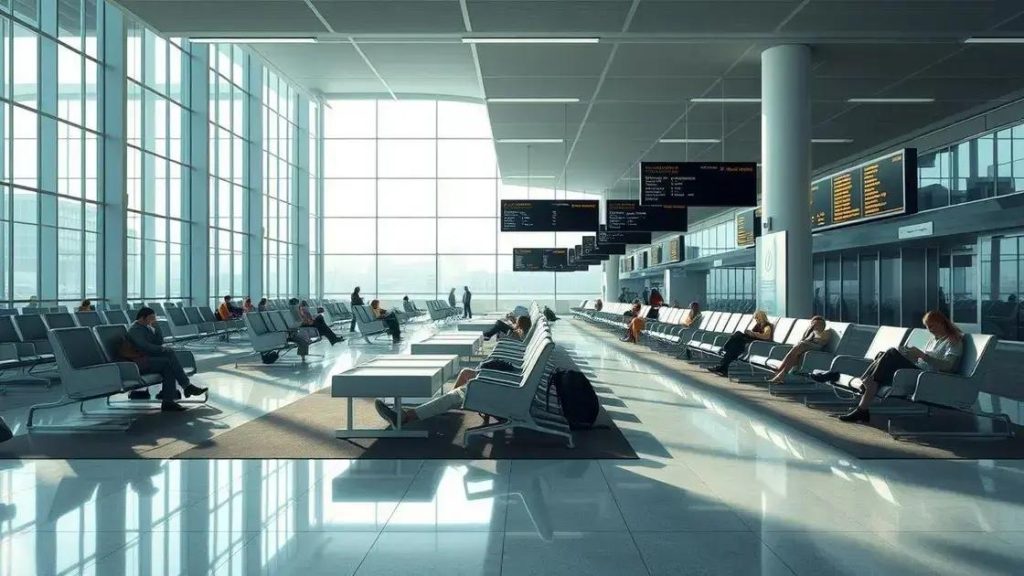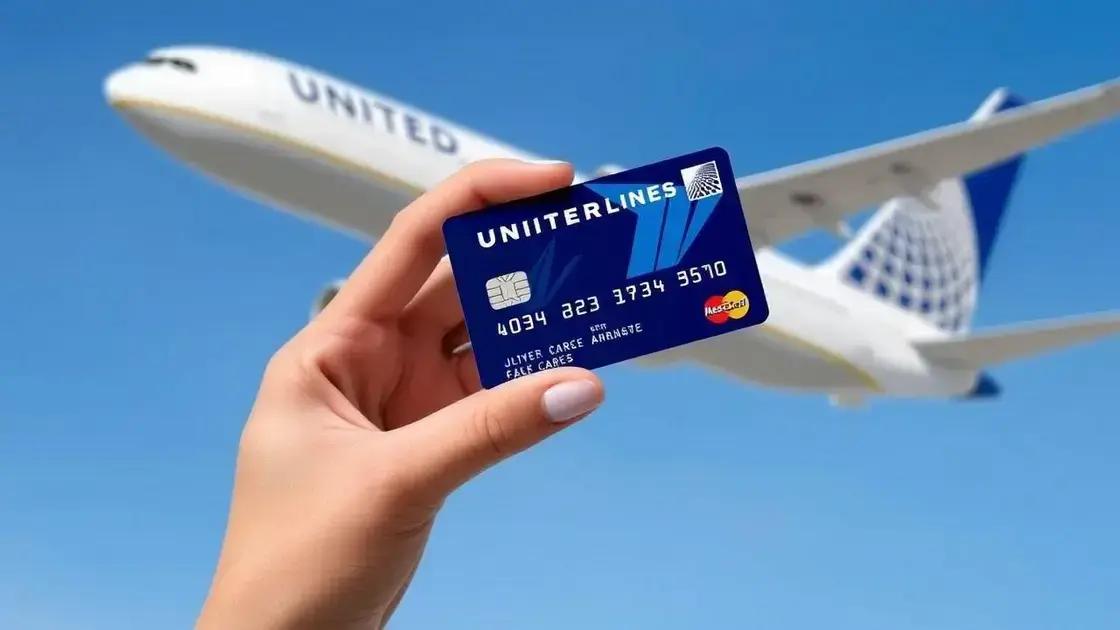Declining demand impacts U.S. international tourism

Anúncios
Declining demand impacts U.S. international tourism by affecting visitor numbers, local economies, and job security, urging the need for innovative strategies to enhance safety, sustainability, and unique travel experiences.
Declining demand impacts U.S. international tourism is a growing concern that many in the industry are watching closely. Have you noticed less buzz in your favorite travel spots? It’s not just you—this shift affects travelers and businesses alike.
Anúncios
Current state of U.S. tourism
The current state of U.S. tourism reveals significant challenges that have developed over recent years. With the rise of global issues and shifting traveler preferences, it’s clear that tourism is not what it used to be. Understanding these changes is crucial for businesses and travelers alike.
Challenges Facing U.S. Tourism
Many factors have contributed to the downturn in U.S. tourism. International visitors are opting for destinations that offer better value or fewer restrictions. Furthermore, increased competition from emerging markets complicates the landscape. Some key challenges include:
Anúncios
- Changing travel restrictions
- Economic uncertainties affecting travel budgets
- Increased global competition with attractive pricing
It’s also important to consider how the COVID-19 pandemic has reshaped the travel industry. Many travelers are now more cautious and seek destinations with less crowded attractions.
Trends in Traveler Behavior
As we explore the current state of tourism, we see a shift in preferences. More people are focusing on safety and convenience. Additionally, travelers are looking for multi-functional experiences. Some notable trends include:
- Increased interest in sustainable travel
- A growing preference for road trips and domestic stays
- Rising demand for outdoor activities
These changes highlight how important it is for stakeholders in the tourism industry to adapt. They must focus on offering value and addressing traveler concerns to encourage exploration.
Ultimately, the landscape of U.S. tourism is evolving, and keeping pace with these changes will be vital. As we move forward, businesses should align their offerings with what travelers now seek, ensuring a better experience for all.
Key factors behind declining demand
Understanding the key factors behind declining demand in U.S. tourism is essential for industry professionals. Various elements are contributing to this trend, affecting traveler enthusiasm and choices.
Economic Influences
Economic factors play a significant role in travel decisions. When there is uncertainty regarding finances, people tend to cut back on luxury expenses, including travel. Increased costs in essentials can prevent potential tourists from booking trips.
- Rising prices of flights and accommodations
- Inflation affecting disposable income
- Uncertain job markets leading to cautious spending
As economic challenges persist, they strongly influence overall tourism patterns.
Travel Restrictions and Health Concerns
The COVID-19 pandemic brought numerous travel restrictions that continue to impact demand. Many travelers are wary of potential quarantine measures or health risks associated with crowded areas. These concerns have shifted their priorities when choosing a destination.
- Ongoing health guidelines and regulations
- Fear of exposure to illness in crowded environments
- Preference for destinations with better safety protocols
Moreover, even as restrictions ease, the lingering fear of outbreaks affects decision-making.
Changing Travel Preferences
Another vital factor is the evolving preferences of travelers. Many are now seeking more personalized and unique experiences. This shift can lead to a reduced interest in traditional tourist hotspots, which may not provide the desired experiences.
As travelers prioritize individual interests, it becomes crucial for industry players to adapt their offerings. Destinations that cater to specific interests, such as adventure, culture, or wellness, are gaining traction. This change presents an opportunity for growth in niche tourism sectors, which may help counter the decline in mainstream travel demand.
Impact on local economies

The impact on local economies due to the decline in tourism is significant and wide-ranging. As visitor numbers drop, communities that rely on tourism face various economic challenges.
Job Losses and Economic Slowdown
When tourism decreases, businesses struggle to stay afloat. This can lead to layoffs and reduced hours for employees in the hospitality sector, including hotels and restaurants. A ripple effect occurs, extending beyond tourism businesses to other local services as well.
- Increased unemployment rates in tourism-dependent areas
- Reduction in service hours for local businesses
- Decreased tax revenue for local governments
As a result, the entire community can feel the burden of an economic slowdown.
Decrease in Consumer Spending
With fewer tourists, local shops and businesses see a direct drop in sales. Less foot traffic means lower sales for restaurants, stores, and attractions. Local economies rely on these sales to thrive and remain vibrant.
Furthermore, as businesses struggle, they often must raise prices to compensate, which can deter both visitors and residents from spending. This cycle of decreased spending leads to a sluggish economy that is hard to recover from.
Community Infrastructure and Investment
Less tourism revenue also impacts community investment in infrastructure and services. Many towns use tourism funds to support public services, like parks, roads, and event programming.
When tourism funds shrink, so does the community’s ability to invest in much-needed improvements. This creates a less appealing environment for both tourists and residents, perpetuating the cycle of decline.
Overall, the energy of tourism fuels economic growth and community development. Local economies must adapt to these changes, searching for new ways to engage visitors and create lasting opportunities.
Strategies to revive tourism
Reviving tourism is critical for communities struggling with the decline in visitor numbers. Implementing effective strategies to revive tourism can lead to a more stable economy and reinvigorate local businesses.
Enhancing Safety Measures
One of the first steps to attract tourists back is to enhance safety measures. Visitors are now more conscious of health protocols. By ensuring clean, safe environments, destinations can instill confidence in potential travelers.
- Implement visible sanitation practices for public areas
- Provide clear guidelines on health measures
- Encourage outdoor activities to minimize close contact
These actions show that the destination values the health of its visitors, making people more willing to travel.
Targeting Local Tourism
Additionally, focusing on local or domestic tourism can help. Many individuals are eager to explore nearby attractions, which can stimulate the economy without requiring long-distance travel. Local marketing campaigns can raise awareness of hidden gems within the community.
- Promote special offers for residents
- Highlight local experiences and attractions
- Organize community events to draw interest
Fostering a sense of local pride can lead to increased visitor numbers.
Collaborating with Local Businesses
Collaboration among local businesses fosters a unified approach. By working together, they can create package deals that attract people. For instance, offering discounts for hotel stays, dining, and attractions can provide value that draws tourists in.
Such partnerships can also lead to the development of unique experiences that appeal to visitors. Highlighting local culture, cuisine, and arts can make the destination more appealing.
Overall, a multi-faceted approach that prioritizes safety, local engagement, and collaboration can significantly contribute to reviving tourism. These strategies will not only help attract visitors back but also create a more vibrant community.
Future outlook for international travel
The future outlook for international travel is an area of great interest for many people. With the lessons learned from the pandemic and shifting consumer preferences, the travel landscape is evolving.
Emerging Trends in Travel
One significant trend is the growing demand for experiential travel. Tourists are now more interested in immersive experiences rather than just visiting popular attractions. This means they seek out authentic local cultures, traditions, and lifestyles.
- Increased interest in cultural exchange programs
- Popularity of wildlife and nature excursions
- Demand for volunteering and sustainable tourism opportunities
These experiences can create lasting memories and deeper connections between travelers and communities.
Technology’s Role
Technology continues to change how we travel. Innovations such as mobile apps, virtual reality (VR), and artificial intelligence (AI) enhance the travel experience. For example, apps can help travelers find safer and less crowded destinations.
Additionally, technology helps with personalized travel planning. As travelers have more choices, they can tailor their trips to fit their preferences.
Looking Ahead: Sustainability and Safety
Sustainability is also a crucial factor shaping the future of international travel. Many tourists prioritize destinations that focus on eco-friendly practices. This trend encourages businesses to adopt sustainable practices, impacting everything from transportation to accommodations.
Moreover, safety will remain a top concern. Travelers want assurance that destinations have health protocols in place. As countries adapt and improve safety measures, they can restore traveler confidence and stimulate growth in international tourism.
In summary, the future of international travel is poised for transformation. Embracing emerging trends, leveraging technology, and focusing on sustainability and safety will shape a more resilient and appealing travel environment.





